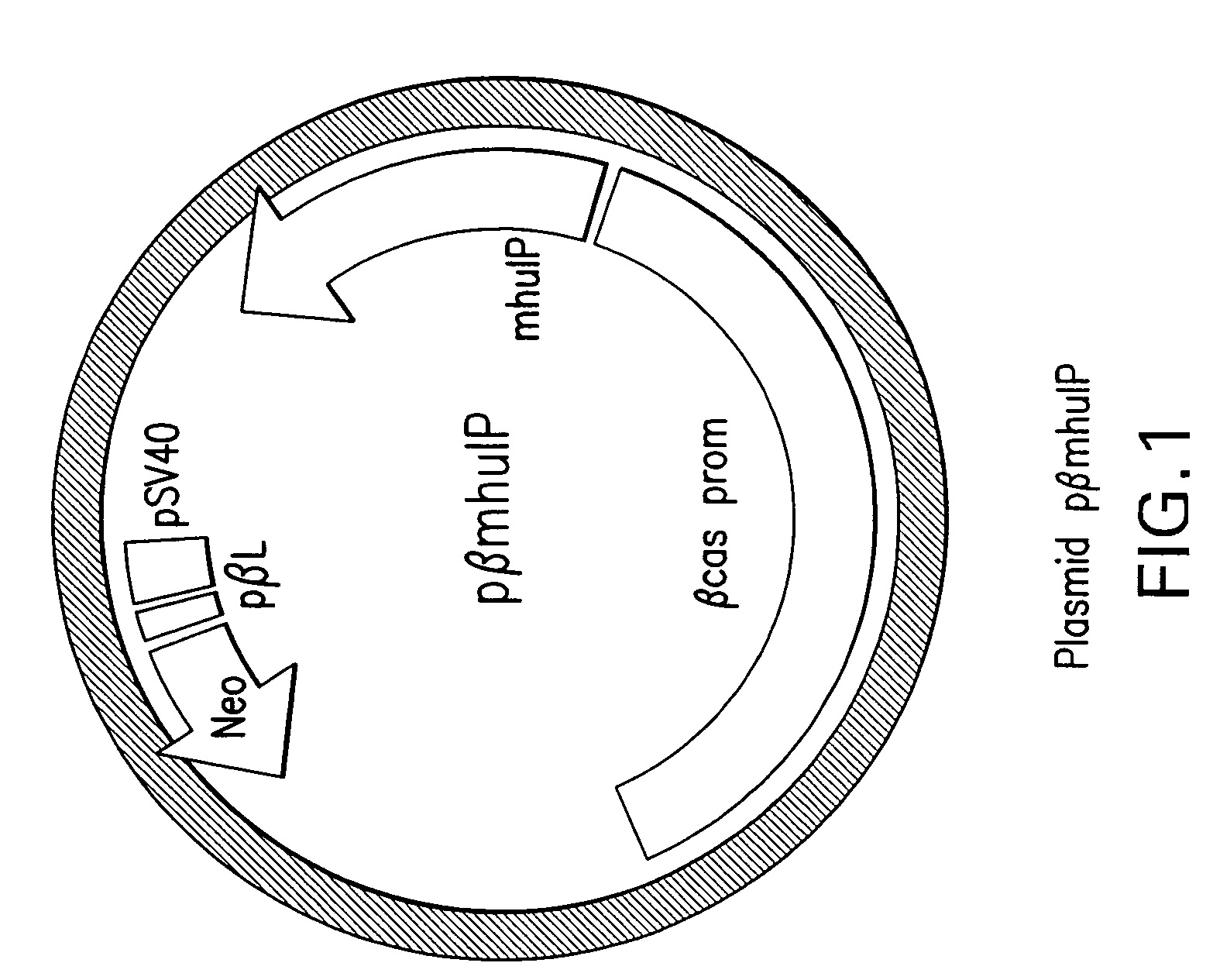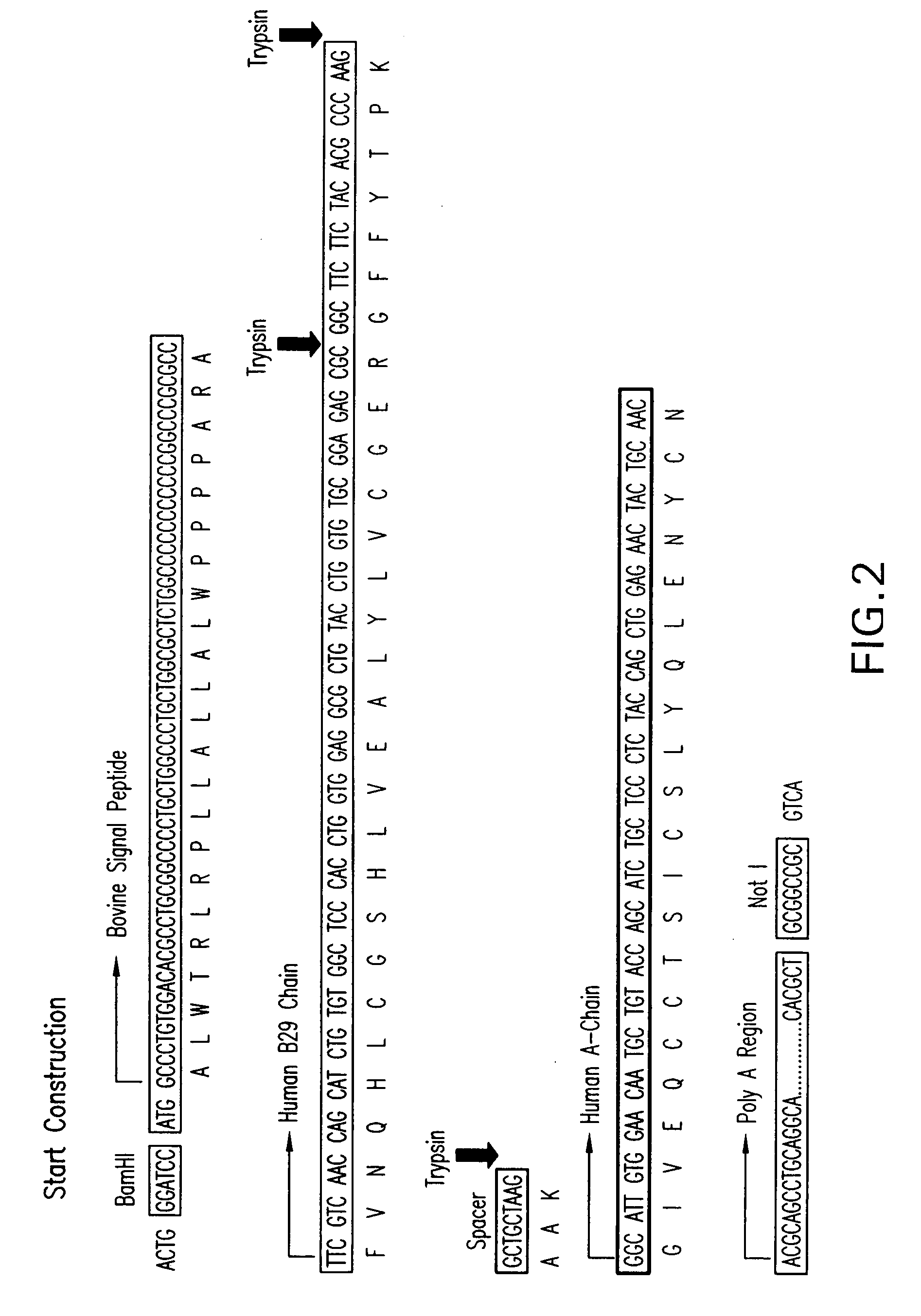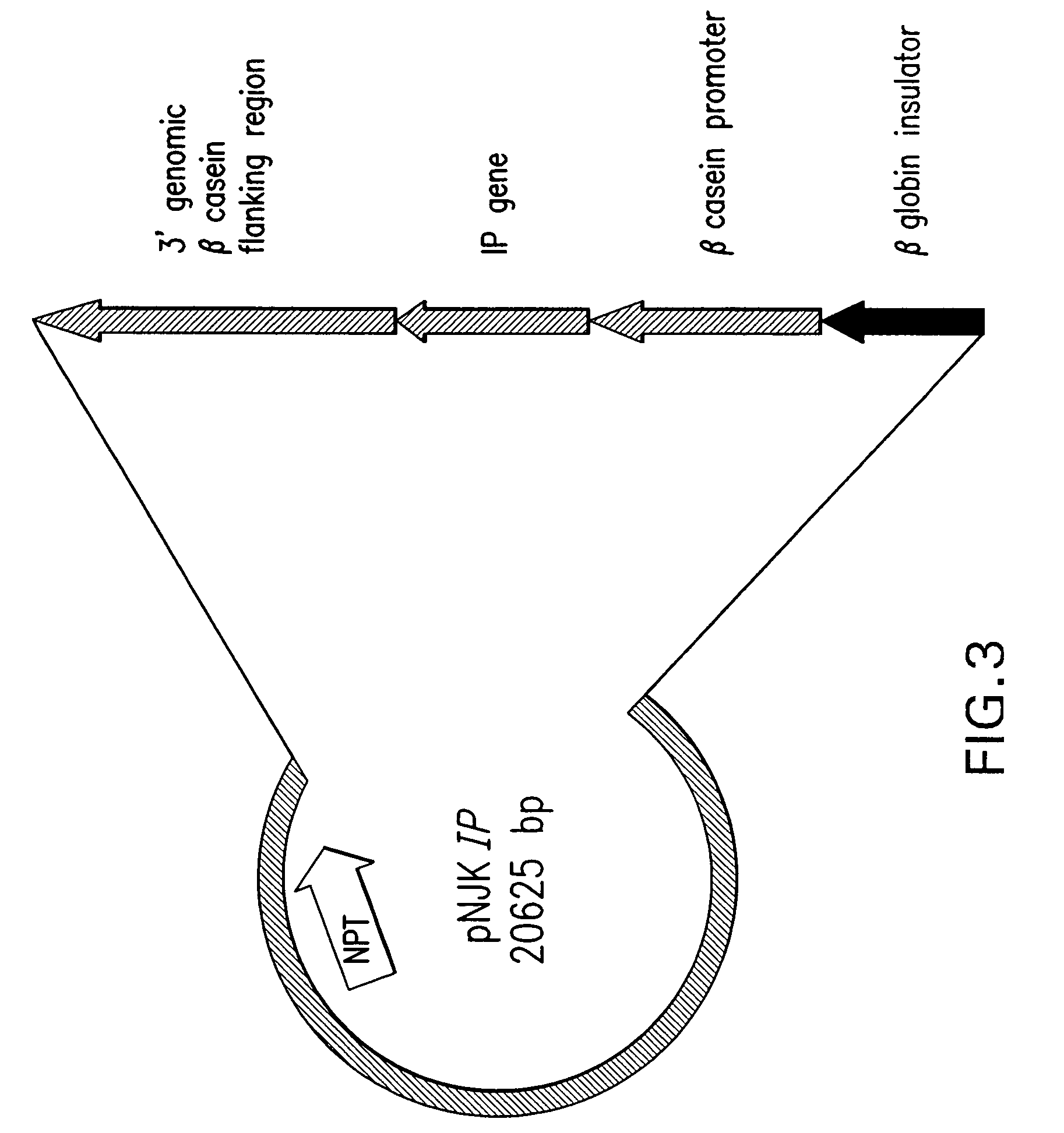Process for Producing Exogenous Protein in the Milk of Transgenic Mammals and a Process For Purifying Proteins Therefrom
- Summary
- Abstract
- Description
- Claims
- Application Information
AI Technical Summary
Benefits of technology
Problems solved by technology
Method used
Image
Examples
example 1
Construction of the Expression Plasmid
[0066]A construct was generated that contained a large portion of the bovine beta casein gene promoter, including a short fragment of the 5′ non-coding beta casein gene region, fused to the coding sequence of a modified human insulin precursor. The short non-translated fragment is a fragment of the first exon of the beta casein gene. The beta casein region employed was about 3.8 kb.
[0067]The construction of the expression plasmid pβmhuIP (see FIG. 1) was carried out by inserting the coding sequence of the modified human insulin precursor (mhuIP) and a large portion of the bovine beta casein promoter gene (corresponding to 3,800 bp from the 5′ region of the beta casein bovine gene) into an adequate vector. This promoter ensures the tissue specific and developmentally regulated expression of genes under its control, in this case heterologous modified human insulin precursor.
[0068]For a proper selection of transgenic cells, a gene encoding Neomycin...
example 2
Oocyte Enucleation and Metaphase Nuclear Transfer in Mature Enucleated Oocytes
Collection and in Vitro Maturation of Bovine Oocytes
[0084]Bovine oocytes were aspirated from slaughterhouse ovaries and matured in TCM-199+5% FCS+3 mM HEPES+antimycotics. The selected oocytes were then placed in TCM-199+Roscovitine, under atmosphere of 5% CO2 at 39° C. for 20 hs. Afterwards, oocytes were placed in TCM-199+5%FCS+FSH (follicle-stimulating hormone)+antibiotics under atmosphere of 5% CO2 at 39° C. for 24 hs. Mature oocytes were denuded by vortexing for 2 minutes in PBS with 1 mg / ml bovine testis hyaluronidase.
example 3
[0085]Nuclear Transfer with Cumulus Cells
Enucleation
[0086]Oocytes were mechanically enucleated using a Narishige hydraulic micromanipulators and Nikon Diaphot microscopy. Enucleation was performed with 20 μm beveled and sharpened pipettes. Oocytes were previously stained with 5 μg / ml bisbenzimidine (Hoechst 333421) dye for 20 minutes. Metaphases were enucleated by visualization of the stained chromosomes under ultraviolet light. Metaphase chromosomes were assessed after aspiration inside the pipette. A transgenic somatic cell was transferred into the perivitelline space and tightly opposed to the enucleated oocyte. 1 Sigma Chemical Co., St. Louis, Mo., USA.
Fusion, Activation and Embryo Culture
[0087]A transgenic somatic cell and an enucleated oocyte were manually aligned in the fusion chamber so that the membranes to be fused were parallel to the electrodes. This was done using a glass embryo-handling pipette.
[0088]Fusion was performed using one electrical pulse of 180 volts / cm for 1...
PUM
| Property | Measurement | Unit |
|---|---|---|
| Electrical resistance | aaaaa | aaaaa |
| Phase | aaaaa | aaaaa |
Abstract
Description
Claims
Application Information
 Login to View More
Login to View More - R&D
- Intellectual Property
- Life Sciences
- Materials
- Tech Scout
- Unparalleled Data Quality
- Higher Quality Content
- 60% Fewer Hallucinations
Browse by: Latest US Patents, China's latest patents, Technical Efficacy Thesaurus, Application Domain, Technology Topic, Popular Technical Reports.
© 2025 PatSnap. All rights reserved.Legal|Privacy policy|Modern Slavery Act Transparency Statement|Sitemap|About US| Contact US: help@patsnap.com



